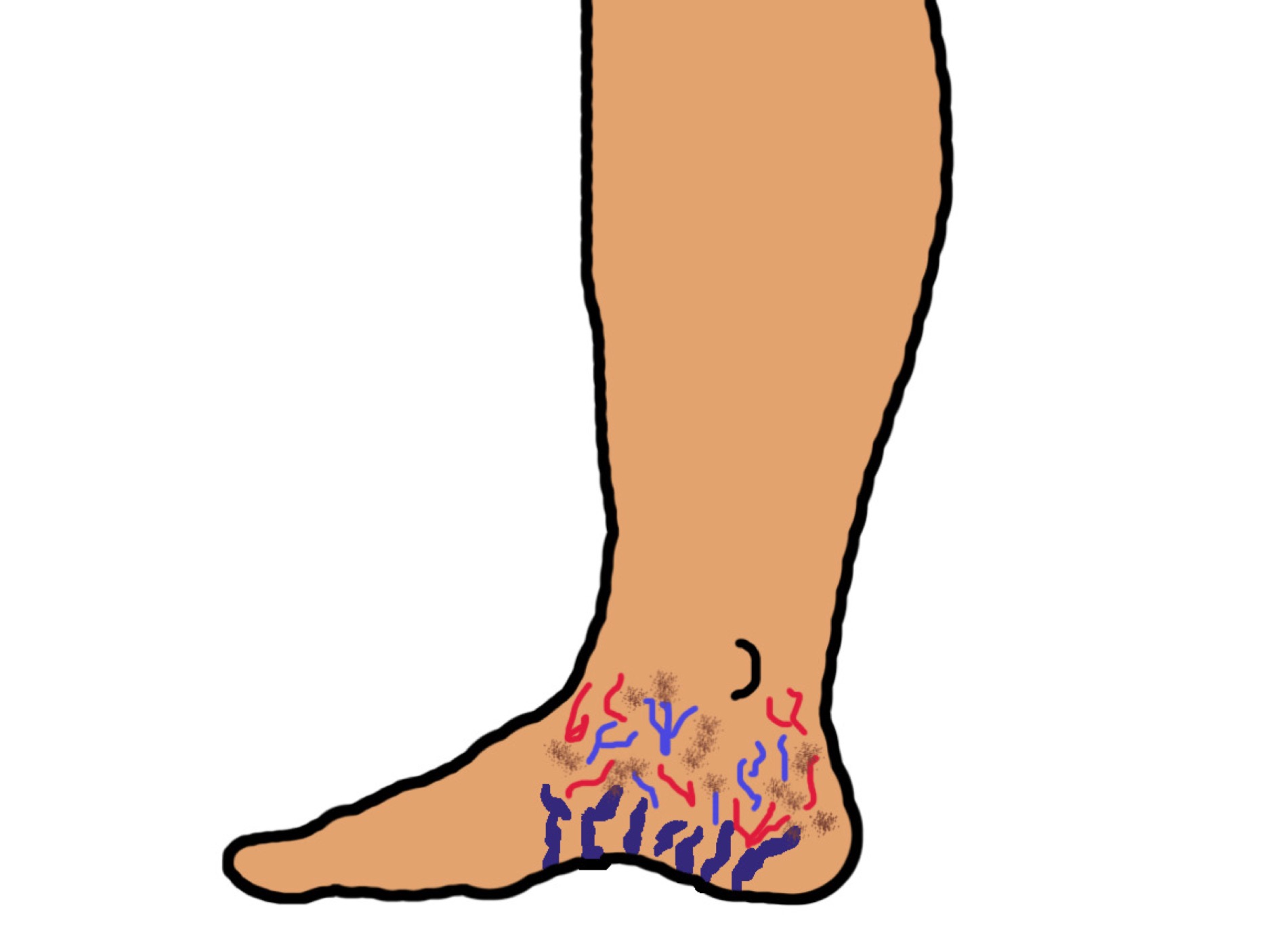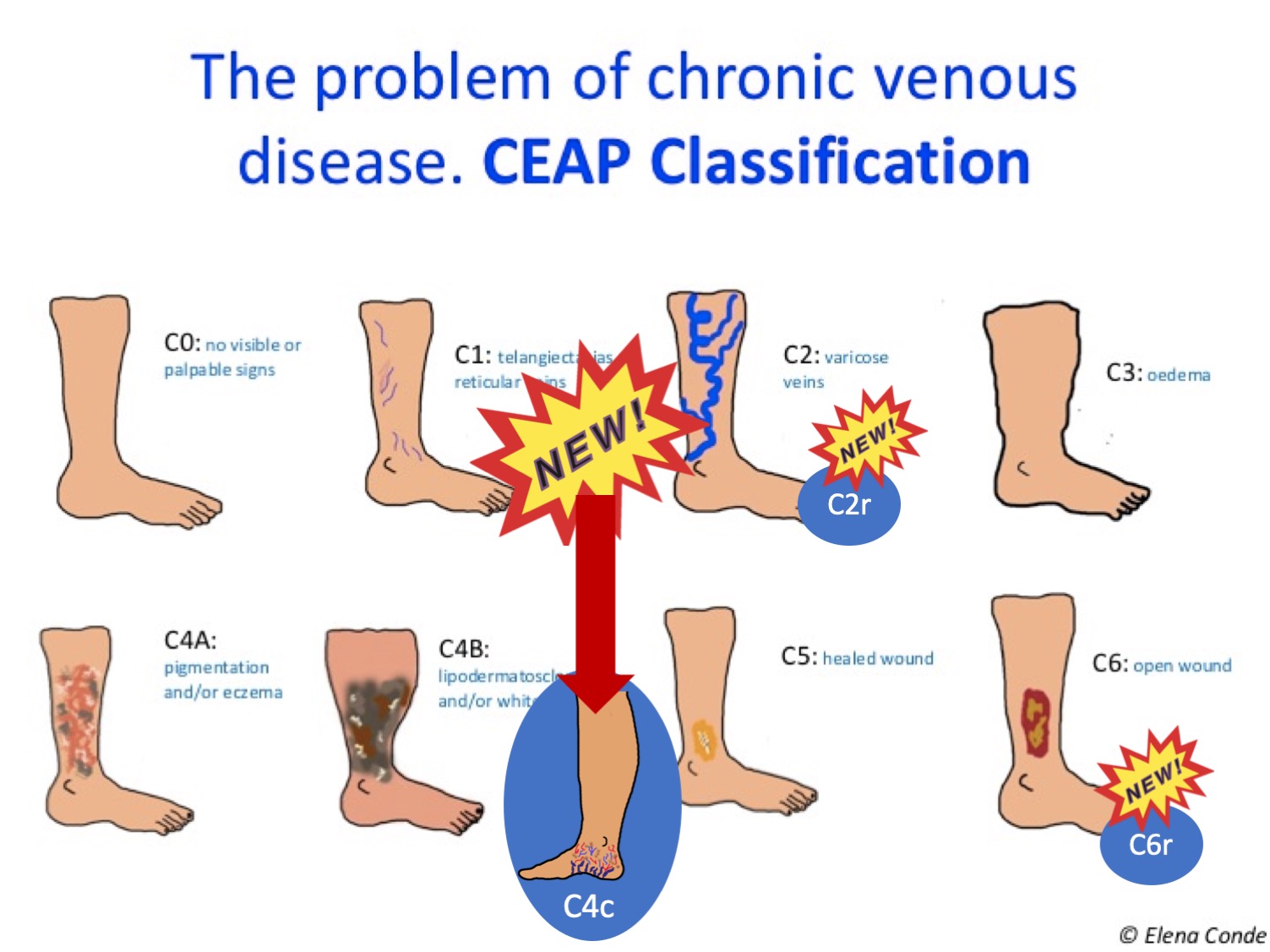The responsible for my selection of this topic is the Virtual Congress of the European Academy of Dermatology, which has been held last week. It has been a pleasure to talk about therapeutic pearls in the session on ulcers, moderated by the great expert and good friend Jürg Harner, who also talked about punch grafts. But the idea for this post did not come from the ulcers session, but from the phlebology session (in many countries in Europe phlebology is a subspecialty of dermatology;). My dear Bibi van Montfrans talked about new developments in phlebology and among them was the recent update of the CEAP classification of chronic venous disease, with the inclusion of corona phlebectatica.
What is the corona?
It is the group of telangiectasias, dilated veins and capillary damage (purpuric or brownish macules) secondary to venous hypertension, which are distributed in a fan pattern on the inner or outer aspect of the ankle and foot.1


It was first described in 1960 and has traditionally been considered an early sign of chronic venous disease. However, studies on this entity have led to it no longer being considered simple telangiectasias in the foot, but a clinical marker with a high predictive value for the appearance of cutaneous changes and the development of venous ulcers. In fact, corona phlebectatica is associated with the presence of saphenous reflux or incompetent perforators.1
Conclusion: We need to look at the ankles and feet of people with chronic venous disease!
What is the CEAP classification?
The CEAP (Clinical-Ethiological-Anatomical-Pathophysiological) classification was created in 1994 to describe the broad spectrum of presentation of chronic venous disease. It was modified in 2004 to refer more broadly to chronic venous disorders. In the post “CEAP classification of chronic venous disorders: let’s all speak the same language” you will find a very detailed explanation. However, that blog post is now outdated because this classification has just been reviewed and modified by international experts.2
What changes are involved in updating the CEAP classification?
One of the new features of the revised CEAP classification is the inclusion of a specific C4c section for the presence of corona phlebectatica. This recognizes that it is a prognostic marker in the evolution of chronic venous insufficiency.3

The remaining modifications are as follows:3
In case of recurrence, an r will be added at stage C2 (C2r=recurrent varices) and C6 (C6r=recurrent ulcer).
Section Es (Etiology, secondary causes) differentiates between intravenous causes, such as post-thrombotic syndrome (Esi) and extravenous causes, such as obesity (Ese).
Section A (Anatomy) has become more practical, as abbreviations for anatomical terms are now used.
I finish by talking again about my friends Bibi van Montfrans and Jürg Hafner, excellent dermatologists and better people, with whom I will participate in a Webinar organized by the European Academy of Dermatology to talk about Martorell ulcer and its star treatment 😉

References:
- Uhl, Jean-François & Cornu-Thénard, André & Carpentier, Patrick & Antignani, Pier. (2013). Focus on corona phlebectatica: Diagnostic, significance and predictive value in chronic venous disorders. Reviews in Vascular Medicine. 1. 38–42.
- Lurie F, Passman M, Meisner M, Dalsing M, Masuda E, Welch H, Bush RL, Blebea J, Carpentier PH, De Maeseneer M, Gasparis A, Labropoulos N, Marston WA, Rafetto J, Santiago F, Shortell C, Uhl JF, Urbanek T, van Rij A, Eklof B, Gloviczki P, Kistner R, Lawrence P, Moneta G, Padberg F, Perrin M, Wakefield T. The 2020 update of the CEAP classification system and reporting standards. J Vasc Surg Venous Lymphat Disord. 2020 May;8(3):342-352.
- Lurie F, De Maeseneer MGR. The 2020 Update of the CEAP Classification: What is New? Eur J Vasc Endovasc Surg. 2020 Jun;59(6):859-860. doi: 10.1016/j.ejvs.2020.04.020. Epub 2020 May 4.
Also available in: Español (Spanish)






